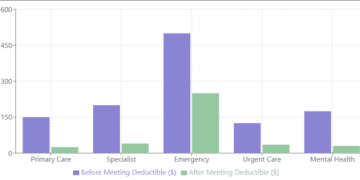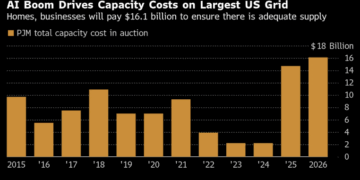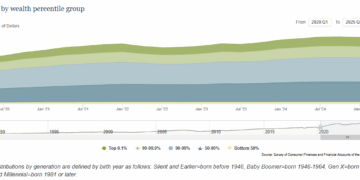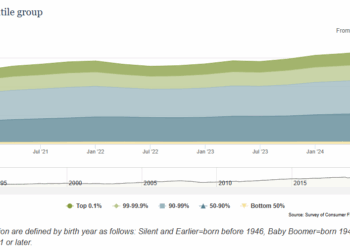President Trump has signed the One Big Beautiful Bill Act into law, and I want to help you understand how this comprehensive legislation will affect Americans across the country. Today, I’m focusing on Title I, which addresses agriculture, nutrition, and forestry programs. This title alone contains significant changes that will impact millions of families, farmers, and rural communities.
SNAP Benefits: Mixed Changes for Food Assistance
The most immediate impact for many families will come through changes to the Supplemental Nutrition Assistance Program (SNAP). The Act introduces a complex set of modifications that will affect both benefits and program administration.
Starting in fiscal year 2028, states will face new financial responsibilities based on their payment error rates. States with error rates below six percent will continue receiving full federal funding, but those with higher error rates will need to contribute between five and fifteen percent of program costs. This change aims to improve program accuracy but may create budget pressures for states with administrative challenges.
The legislation also modifies work requirements for able-bodied adults, adding new exemptions for Native Americans and pregnant women while establishing special provisions for non-contiguous states like Alaska and Hawaii. These states can receive temporary exemptions through 2028 if they demonstrate good faith efforts to comply with work requirements.
For households, utility allowance calculations will change, with internet expenses excluded from shelter deduction calculations. However, elderly and disabled households will retain broader access to standard utility allowances, creating a two-tiered system based on household composition.
Farm Programs: Substantial Increases in Support
Farmers will see significant expansions in support through multiple program changes. Reference prices for major commodities are increasing substantially. For example, corn reference prices rise from current levels to $4.10 per bushel, while soybean reference prices increase to $10.00 per bushel. These higher reference prices will trigger more frequent payments under the Price Loss Coverage program when market prices fall below these thresholds.
Perhaps most significantly, the Act authorizes the allocation of an additional 30 million base acres to eligible farms. This represents a massive expansion of the farm safety net, potentially bringing millions of previously ineligible acres into federal farm programs. Farms that planted more covered commodities during 2019-2023 than their current base acres will be eligible for this allocation.
Payment limitations are also increasing from $125,000 to $155,000 per person, with annual inflation adjustments beginning in 2025. The Act creates new exceptions to adjusted gross income limitations for operations where 75 percent of income derives from farming activities, effectively allowing more larger operations to participate in federal programs.
Enhanced Crop Insurance Protection
The crop insurance title brings meaningful improvements for farmers, particularly beginning farmers and ranchers. The definition of “beginning farmer” extends from five to ten years of experience, allowing more producers to access enhanced benefits.
Beginning farmers will receive additional premium assistance ranging from one to five percentage points above standard rates, depending on their years of participation. Area-based coverage levels increase to 95 percent, with premium subsidies for area coverage rising from 65 to 80 percent.
The Act also establishes a poultry insurance pilot program to help contract growers manage extreme weather-related utility cost increases. This addresses a significant coverage gap in current crop insurance offerings.
Disaster Assistance Improvements
Livestock producers will benefit from enhanced disaster assistance programs. Payment rates for livestock losses due to predation increase to 100 percent of market value, while weather and disease-related losses remain at 75 percent.
A new provision addresses unborn livestock losses, providing payments for gestating animals lost due to covered disasters. This fills a significant gap in current disaster assistance, as producers previously received no compensation for unborn animals.
The livestock forage program also expands, allowing producers to receive assistance after four consecutive weeks of drought conditions rather than the current eight-week requirement.
Conservation and Rural Investment Increases
Conservation program funding receives substantial increases, with the Environmental Quality Incentives Program growing to $700 million annually by 2029. The Conservation Stewardship Program will reach $3.255 billion annually, while the Regional Conservation Partnership Program increases to $450 million per year.
The Act establishes a new supplemental agricultural trade promotion program with $285 million in annual funding beginning in fiscal year 2027. This represents a significant investment in expanding export markets for American agricultural products.
Research programs also receive enhanced funding, including $175 million annually for specialty crop research and $125 million annually for competitive research facility grants.
Timeline and Implementation
Most provisions take effect with the 2025 crop year, though some changes phase in over several years. The SNAP state cost-sharing requirements begin in fiscal year 2028, providing states time to prepare for new financial responsibilities.
Farm program changes extend through the 2031 crop year, providing eight years of enhanced support levels. Conservation program funding increases begin in fiscal year 2026 and continue through 2031.
Looking Ahead
Title I represents a significant expansion of the federal agricultural safety net and nutrition assistance programs. While some changes create new complexities, particularly in SNAP administration, the overall direction increases support for farmers and maintains nutrition assistance for vulnerable populations.
These changes reflect the ongoing challenge of balancing program integrity with accessibility, while responding to evolving needs in American agriculture and food assistance. The substantial funding increases across multiple programs demonstrate continued federal commitment to supporting rural America and ensuring food security.
As implementation proceeds, I’ll continue monitoring how these changes affect communities across the country and will provide updates on the remaining nine titles of this comprehensive legislation.

















































